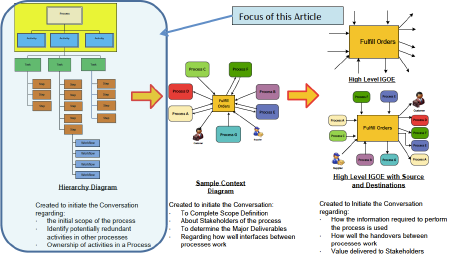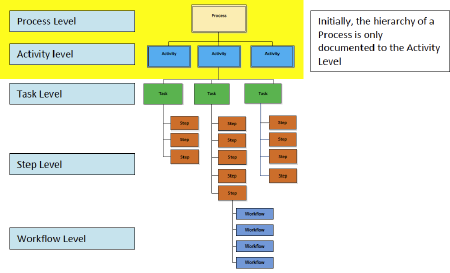It's the Conversation, Not the Picture (Part 1)
There are as many answers to "what is the value?" as there are to "what does documenting a process mean?" In my previous article, I suggested three rules for process documentation.
- It must provide immediate value.
- An eight-year-old should be able to understand it.
- It's reusable.
Documenting a process for the business means capturing enough information about the work to explain it to various audiences and have them understand where value is created. A conversation about the process with the Process Owners is the best way to define a process scope. Discussions with Process Leads, Process Architects, and SMEs (subject matter experts) will clarify how the process interfaces with the other areas of the business. It has often been stated that overall the operational performance of the individual processes, as they are defined in the Business Architecture, is relatively efficient. The opportunities to create value and increase the efficiency of the overall process life cycle are very often in the handovers between processes.
Recording the Conversations
Figure 1 shows three different types of diagrams that can be used to record the conversations from working sessions to define and understand processes.

Figure 1. Samples of Various Process Diagrams.

In this three-part series of articles, we'll explore each of these and how their usage adds tremendous value to any organization wishing to improve its business performance.
Process Hierarchy Diagrams
A hierarchy diagram is a simple diagramming technique that captures the "what happens" answer for a process, as illustrated by Figure 2.
Figure 2. A Sample Process Hierarchy Diagram.
How does the Process Hierarchy Diagram stack up against our three rules for process documentation?
1. It must provide immediate value.
• useful to people doing the work — 'fit for purpose'
It's useful to Process Owners because it defines the scope of the process they own.
• highlights "objectively" where the major pain points exist
Often overlaps in accountability and responsibility are identified, as activities within the process scope are defined.
• identifies clearly solvable problems
Although overlaps in responsibility may not be easily resolved, they are transparent and can be addressed by the appropriate Process Owners.
Process Hierarchy Diagrams can be used to capture the scope of the process, as well as the boundaries and ownership of the process. The hierarchy also contains enough detail to help other areas understand the process and scope, and it can provide the structure for documents related to the business. Comparing information in the various process hierarchies allows the rapid identification of redundant and/or overlapping work. Initially, only the process and activity levels in the hierarchies for each process are documented.
2. It can be explained to an eight year old.
Kids do get it. They don't necessarily understand its value, but they do understand what it represents.
3. It's reusable.
Once the scope of a process has been agreed using a hierarchy diagram, that scope of work can be used to discuss the interfaces/relationships with other areas/processes in the business.
The activities defined in the hierarchy will be used to further understand the work, the order in which work happens, and the resources used to complete it.
Summary
A process hierarchy diagram is a very simple picture, but its value should not be discounted. In the initial definition and discovery work done for business processes, this will probably be the most used, changed, and redrawn picture. The good news is that all those changes are the result of many conversations between Process Owners, SMEs, and other processes that occur in order to better understand and improve the business performance.# # #
About our Contributor:
Online Interactive Training Series
In response to a great many requests, Business Rule Solutions now offers at-a-distance learning options. No travel, no backlogs, no hassles. Same great instructors, but with schedules, content and pricing designed to meet the special needs of busy professionals.











How to Define Business Terms in Plain English: A Primer
How to Use DecisionSpeak™ and Question Charts (Q-Charts™)
Decision Tables - A Primer: How to Use TableSpeak™
Tabulation of Lists in RuleSpeak®: A Primer - Using "The Following" Clause
Business Agility Manifesto
Business Rules Manifesto
Business Motivation Model
Decision Vocabulary
[Download]
[Download]
Semantics of Business Vocabulary and Business Rules